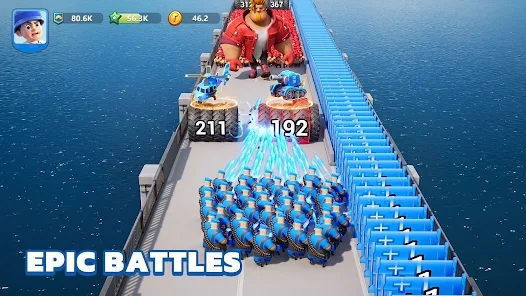Unlocking Creativity: How Indie Simulation Games Are Redefining the Gaming Landscape
The gaming industry has seen a remarkable transformation in recent years, particularly with the rise of indie simulation games. These unique creations blend innovation and artistic expression, enabling players to immerse themselves in landscapes that were once unimaginable. But what makes indie simulation games stand out? Let’s explore the intricacies of this thriving genre.
The Indie Revolution in Gaming
Indie games have emerged as a powerful force, breaking traditional barriers and offering experiences that mainstream games often overlook. Developers can explore unconventional narratives, engage players in deeper storytelling, and create mechanics that challenge expectations. Indie games are a gateway to creativity, showcasing distinct styles and innovative gameplay that captivate audiences.
Understanding Simulation Games
Simulation games, by definition, aim to replicate real-world activities. These games range from life simulators, where players manage virtual lives, to intricate city-building scenarios. The beauty lies in their ability to mimic reality while still allowing for boundless creativity. The artistry in simulation game design often reflects personal touch, guiding players through various challenges and experiences.
The Intersection of Indie and Simulation
For indie developers, simulation games offer an outlet for creativity, far removed from the constraints of corporate expectations. The indie landscape embraces experimentation, encouraging developers to explore narrative depth and unique game mechanics. With titles like Kingdom Battle, DK, Color Switch, and Puzzle, indie games have not only entertained but also inspired players to create their paths.
Creating Your Own RPG Game
One of the most exciting aspects of indie simulation games is the potential for players to step into the role of a game creator. Platforms such as RPG Maker and GameMaker Studio enable aspiring developers to create your own RPG game. This democratization of game design allows anyone with an idea to manifest their vision, making the gaming landscape more inclusive.
Benefits of Indie Simulation Games
Indie simulation games provide several advantages, setting them apart from traditional gaming experiences:
- Creative Freedom: Developers can design without corporate interference.
- Community Engagement: Many indie games thrive on player feedback, fostering a sense of community.
- Unique Experiences: The drive to innovate results in gameplay that distinguishes itself from mainstream titles.
- Accessible Development Tools: Aspiring developers have access to countless resources and platforms to bring their ideas to life.
Popular Indie Simulation Games to Explore
The indie scene is bustling with remarkable titles. Here’s a table showcasing some notable games that have paved the way for creativity in simulation gaming:
| Game Title | Developer | Release Year | Short Description |
|---|---|---|---|
| Stardew Valley | ConcernedApe | 2016 | A farming simulation RPG where players manage a farm and engage with the local community. |
| Animal Crossing: New Horizons | Nintendo | 2020 | A life simulation game that allows players to build and customize their island paradise. |
| Banished | Lyonhead Studio | 2014 | A city-building strategy game focused on resource management and survival. |
| Oxygen Not Included | Klei Entertainment | 2017 | A space-colony simulation game that challenges players to manage the needs of their colonists. |
Challenges Faced by Indie Developers
While indie simulation games are redefining creativity, developers encounter challenges. These obstacles include:
- Funding Issues: Securing financial backing can be difficult for indie projects.
- Market Visibility: Standing out in a saturated market is a common challenge.
- Resource Limitations: Indie teams often operate with smaller budgets and teams compared to larger studios.
- Technical Challenges: Navigating game design complexities demands a wide range of skills.
The Future of Indie Simulation Games
The future appears bright for indie simulation games. With increasing support from platforms and the gaming community, innovative crafting remains at the forefront of this genre. As technology continues to evolve, developers will embrace new tools and virtual realities, enhancing the player experience. We can likely expect even more engaging stories, dynamic environments, and inclusive gameplay that breaks conventional norms.
Conclusion
Indie simulation games are not just games; they are a movement toward unleashing creativity and individuality in the gaming landscape. Developers and players alike are charting new territories, redefining what games can be. As we unlock the doors to creativity, the indie genre reminds us of the fundamental joy of building, creating, and sharing experiences that resonate with the human spirit.



